Twin Cities Postal Workers Rally Over Reported Issues: Addressing Usps Concerns

The Twin Cities postal workers rally over reported issues has drawn attention to the challenges faced by United States Postal Service (USPS) employees. Concerns surrounding post office operations, including delivery problems, workload, and safety concerns, have prompted workers to voice their frustrations. This article delves into the details of the rally, exploring protests, potential strikes, and the ongoing efforts to address the issues faced by postal workers in the Twin Cities. As concerns grow, Amdwindow.vn aims to provide insights into the rally and shed light on the current state of the USPS.
I. The Twin Cities Postal Workers Rally: Addressing Reported Issues and Concerns
1. Background: Postal Workers Protest and Walkouts
The Twin Cities Postal Workers Rally has brought attention to the challenges faced by employees of the United States Postal Service (USPS). Postal workers across the Twin Cities have voiced their frustrations through protests and walkouts, highlighting the need for improved conditions and addressing reported issues within the postal service. These demonstrations aim to draw attention to the concerns surrounding post office operations, including delivery problems, workload, and safety concerns.
2. Can USPS Employees Strike? Exploring the Legal Framework
As the rally gains momentum, there is a question of whether USPS employees have the right to strike. The legal framework surrounding postal worker strikes is complex, as federal employees are subject to certain restrictions when it comes to collective bargaining and striking. While USPS employees are not prohibited from striking outright, restrictions are in place to ensure that disruptions to the postal service are minimized, especially given its essential role in the nation’s infrastructure. However, these restrictions do not prevent workers from expressing their concerns and advocating for improved working conditions through organized protests and rallies.
3. Post Office Issues with Delivery: Challenges Faced by Postal Workers
The Twin Cities postal workers rally shines a light on the challenges faced by USPS employees regarding mail delivery. Late deliveries, increased workloads, staffing shortages, and technological implementation challenges have become significant issues affecting postal workers. Late deliveries and service disruptions can cause frustration among both postal workers and customers, who rely on timely and efficient mail delivery. The increased workload, often resulting from staff shortages, can put additional pressure on employees, affecting their well-being and job satisfaction. Technological challenges, such as navigating new systems and processes, can also contribute to difficulties in providing seamless mail delivery services.
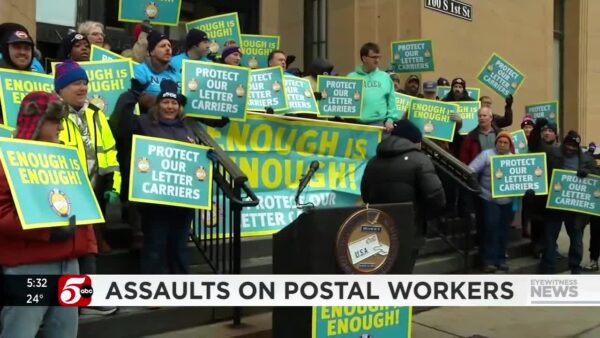
II. Background: Postal Workers Protest and Walkouts
Protests Shine Light on Postal Workers’ Concerns
The Twin Cities postal workers rally has emerged as a platform for employees to voice their frustrations and draw attention to the challenges faced by USPS workers. One of the key issues driving these protests is the reported problems within post office operations, ranging from delivery delays to staffing shortages. These challenges not only impact the efficiency of mail delivery but also pose safety concerns for postal workers who are on the front lines.
Understanding the Motivations behind Potential Strikes
As postal workers continue to grapple with persistent issues, the possibility of strikes looms on the horizon. While federal law prohibits USPS employees from participating in traditional strikes, there are legal avenues, such as work slowdowns and informational picketing, that allow workers to express their concerns and put pressure on USPS management. Strikes or work stoppages would undoubtedly have a significant impact on mail delivery and could serve as a powerful way for workers to demand action and prompt change.
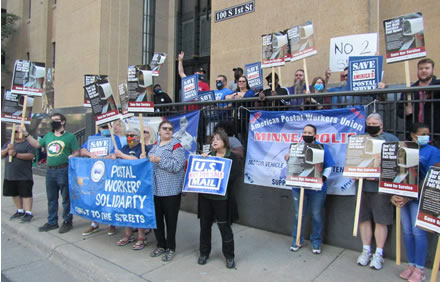
III. Can USPS Employees Strike? Exploring the Legal Framework
Employee strikes can be a powerful tool for workers to express their grievances and demand change. However, when it comes to USPS employees, the legal framework surrounding their right to strike is different. The Postal Reorganization Act of 1970 designated USPS as an independent agency of the federal government and classified postal workers as federal employees. As federal employees, USPS workers do not have the same rights to strike as employees in the private sector.

IV. Post Office Issues with Delivery: Challenges Faced by Postal Workers
Postal workers in the Twin Cities and across the country are grappling with a range of challenges that affect mail delivery. One major concern is delayed deliveries, which have become increasingly common. Customers rely on prompt and efficient service, making delays frustrating for both recipients and postal workers who strive to meet expectations.
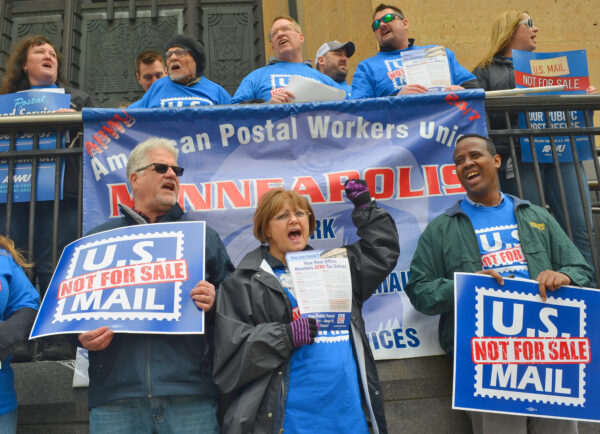
V. – Late Deliveries and Service Disruptions
One of the significant concerns raised by Twin Cities postal workers during the rally is the issue of late deliveries and service disruptions. USPS employees have been facing challenges in ensuring timely delivery of mail and packages. Customers relying on the postal service for their essential goods and important documents have been affected by delays, leading to frustration and dissatisfaction. The growing workload, limited staffing, and the increased reliance on technology have contributed to these service disruptions. Addressing and resolving these issues is crucial to restoring public trust and confidence in the USPS.
VI. – Increased Workload and Staffing Shortages
The Twin Cities postal workers are facing the challenge of increased workloads and staffing shortages within the United States Postal Service (USPS). With rising demand for online shopping and package deliveries, postal workers have experienced a significant surge in the volume of mail to be processed and delivered. The limited number of staff available to handle this immense workload has put additional pressure on postal workers, affecting their ability to meet delivery targets and provide efficient service.

VII. – Technology Implementation Challenges
The USPS has been undergoing technological advancements in recent years, with the aim of streamlining operations and improving efficiency. However, the implementation of new technologies has posed significant challenges for postal workers. The transition to new systems and processes has been met with resistance and difficulties, impacting the smooth running of day-to-day operations. Integration issues, training needs, and technical glitches have resulted in delays and disruptions, further adding to the frustrations faced by postal workers.
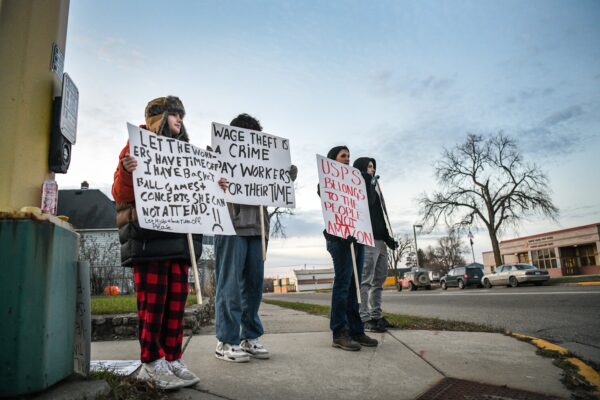
VIII. – Ensuring Safety in a Challenging Work Environment
One of the key concerns raised at the Twin Cities postal workers rally is the need to ensure safety in a challenging work environment. Postal workers face an increasing number of violent crimes, such as assaults and robberies, while performing their duties. The rally emphasizes the importance of creating measures and protocols to protect employees from these incidents. Improved collaboration between the U.S. Postal Inspection Service and the U.S. Department of Justice is crucial in ensuring that criminals responsible for such attacks are prosecuted accordingly. By addressing safety concerns, the USPS can prioritize the well-being of its workers and provide them with a secure working environment.
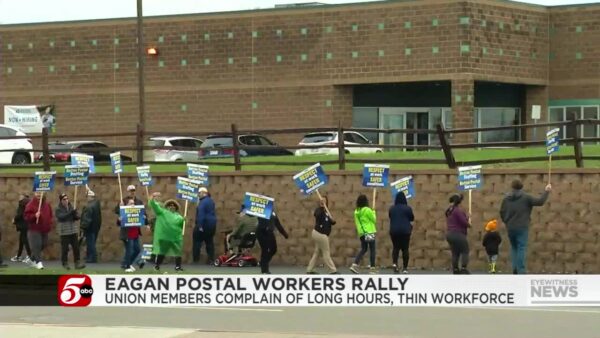
IX. Addressing Post Office Toxic Work Environment
The Twin Cities postal workers rally is not only focused on the physical safety of USPS employees but also on addressing the toxic work environment that exists within the post office. Many letter carriers and other postal workers have expressed concerns about the hostile atmosphere they encounter on a daily basis. This includes issues such as verbal abuse, harassment, discrimination, and bullying. The rally aims to bring attention to these matters and calls for measures to create a healthier and more supportive work environment for postal workers.

X. Conclusion
The Twin Cities postal workers rally sheds light on the concerns faced by USPS employees and the challenges they encounter in their daily work. The protest aims to draw attention to reported issues such as post office problems affecting mail delivery, including late deliveries, increased workload, staffing shortages, and technology implementation challenges. Postal workers are demanding a safe work environment where they can perform their duties without fear of violence or attacks. It is crucial for the U.S. Postal Inspection Service and the Department of Justice to address these concerns and take appropriate measures to protect and support postal workers. By bringing awareness to these issues, the rally strives to bring about positive change and ensure the well-being of the dedicated individuals who serve our communities.
Disclaimer: The information in this article has been compiled from multiple sources, including Wikipedia.org and various newspapers. While we have taken great care to authenticate the accuracy of the information, we cannot guarantee that every detail is completely verified. Consequently, we advise exercising caution when using this article as a reference for research or reports.








